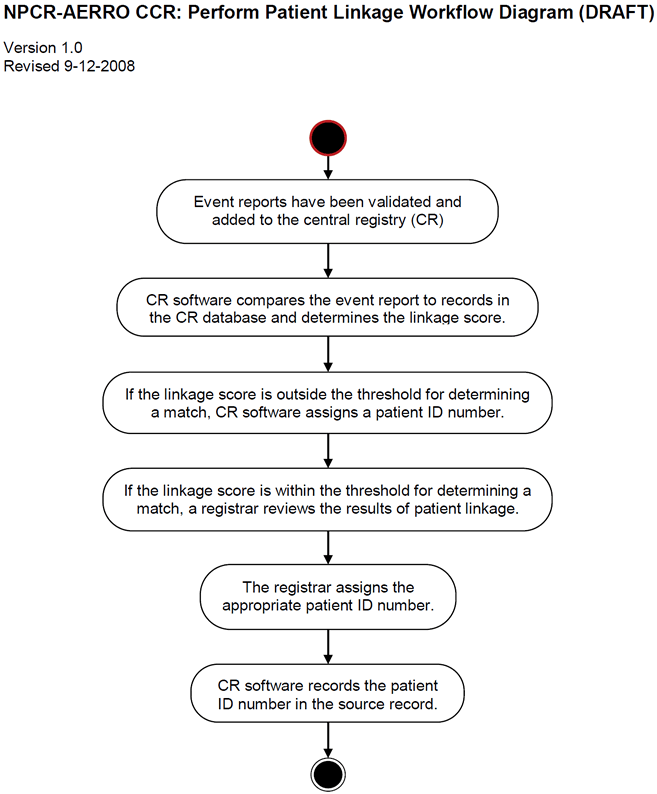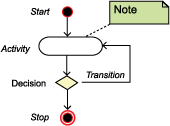CCR Perform Patient Linkage Workflow Diagram
The central cancer registry (CCR) perform casefinding audit workflow diagram shows the overall procedural flow of the functions. A text description of the diagram and legend may be found below. For information about reading diagrams, see Diagram Conventions.

Workflow Diagram Legend
The perform casefinding audit use case begins when the central cancer registry (CCR) software selects a data source and creates a casefinding audit table for that data source. The CCR software selects cases based on established criteria.
CCR staff select a list of casefinding sources, notify the data source staff of the upcoming casefinding audit, and request a sample for each casefinding source. The data source staff submit sample casefinding reports to the CCR staff, who validate the casefinding report format. If the format is acceptable, CCR staff notify the data source staff; otherwise, CCR staff provide instructions to the data source staff for modifying the format. When the format is acceptable, the data source staff submit the casefinding reports in electronic or printed format.
The CCR software inserts the report information into the casefinding audit table (CaseFindingAudit). It compares the casefinding report in the CaseFindingAudit table with the existing reports in the CCR database, and identifies any reports that were not submitted by the data source (non-matched reports). The CCR software creates a list of non-matched reports (called a reconciliation report) for each casefinding audit source, and sends it to the data source for reconciliation.
Data source staff review and resolve the reconciliation report. If the non-matched report is reportable to the CCR, data source staff create and submit an abstract, and the CCR software adds the abstracted event report to the CCR database. If the non-matched report is not reportable, data source staff document why it is not reportable and return the reconciliation report to the CCR.
CCR staff enter the results from the reconciliation report into the casefinding audit database. If the CCR maintains an administrative non-reportable database, CCR staff enter information into the non-reportable database. CCR staff analyze and report the results to the data source staff.
CCR staff analyze the aggregated results from all audited data sources, and report or publish the results.
- Page last reviewed: December 30, 2015
- Page last updated: December 30, 2015
- Content source:
- Maintained By:


 ShareCompartir
ShareCompartir
